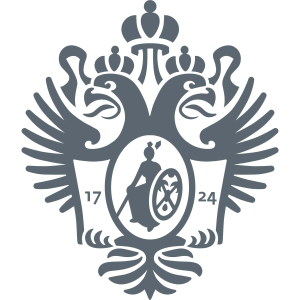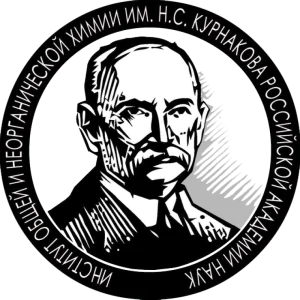Open Access


First-Principles Evaluation of the Morphology of WS2 Nanotubes for Application as Visible-Light-Driven Water-Splitting Photocatalysts
Publication type: Journal Article
Publication date: 2019-01-16
scimago Q1
wos Q2
SJR: 0.773
CiteScore: 7.1
Impact factor: 4.3
ISSN: 24701343
PubMed ID:
31459410
General Chemistry
General Chemical Engineering
Abstract
One-dimensional tungsten disulfide (WS2) single-walled nanotubes (NTs) with either achiral, i.e., armchair (n, n) and zigzag-type (n, 0), or chiral (2n, n) configuration with diameters dNT > 1.9 nm have been found to be suitable for photocatalytic applications, since their band gaps correspond to the frequency range of visible light between red and violet (1.5 eV < Δεgap < 2.6 eV). We have simulated the electronic structure of nanotubes with diameters up to 12.0 nm. The calculated top of the valence band and the bottom of the conduction band (εVB and εCB, respectively) have been properly aligned relatively to the oxidation (εO2/H2O) and reduction (εH2/H2O) potentials of water. Very narrow nanotubes (0.5 < dNT < 1.9 nm) are unsuitable for water splitting because the condition εVB < εO2/H2O < εH2/H2O < εCB does not hold. For nanotubes with dNT > 1.9 nm, the condition εVB < εO2/H2O < εH2/H2O < εCB is fulfilled. The values of εVB and εCB have been found to depend only on the diameter and not on the chirality index of the nanotube. The reported structural and electronic properties have been obtained from either hybrid density functional theory and Hartree–Fock linear combination of atomic orbitals calculations (using the HSE06 functional) or the linear augmented cylindrical waves density functional theory method. In addition to single-walled NTs, we have investigated a number of achiral double-walled (m, m)@(n, n) and (m, 0)@(n, 0) as well as triple-walled (l, l)@(m, m)@(n, n) and (l, 0)@(m, 0)@(n, 0) nanotubes. All multiwalled nanotubes show a common dependence of their band gap on the diameter of the inner nanotube, independent of chirality index and number of walls. This behavior of WS2 NTs allows the exploitation of the entire range of the visible spectrum by suitably tuning the band gap.
Found
Nothing found, try to update filter.
Found
Nothing found, try to update filter.
Top-30
Journals
|
1
2
|
|
|
Russian Journal of Inorganic Chemistry
2 publications, 5.71%
|
|
|
International Journal of Hydrogen Energy
2 publications, 5.71%
|
|
|
Applied Physics Reviews
1 publication, 2.86%
|
|
|
ACS Omega
1 publication, 2.86%
|
|
|
Catalysts
1 publication, 2.86%
|
|
|
Journal of Electronic Materials
1 publication, 2.86%
|
|
|
Materials Science and Engineering B: Solid-State Materials for Advanced Technology
1 publication, 2.86%
|
|
|
Chemical Engineering Journal
1 publication, 2.86%
|
|
|
IOP Conference Series: Materials Science and Engineering
1 publication, 2.86%
|
|
|
Thin Solid Films
1 publication, 2.86%
|
|
|
Applied Surface Science
1 publication, 2.86%
|
|
|
Small Methods
1 publication, 2.86%
|
|
|
ACS Energy Letters
1 publication, 2.86%
|
|
|
ACS Applied Nano Materials
1 publication, 2.86%
|
|
|
Journal of Materials Chemistry C
1 publication, 2.86%
|
|
|
NanoScience and Technology
1 publication, 2.86%
|
|
|
Computational and Theoretical Chemistry
1 publication, 2.86%
|
|
|
Nanomaterials
1 publication, 2.86%
|
|
|
Scientific Reports
1 publication, 2.86%
|
|
|
Nano Letters
1 publication, 2.86%
|
|
|
ACS Physical Chemistry Au
1 publication, 2.86%
|
|
|
Physical Chemistry Chemical Physics
1 publication, 2.86%
|
|
|
ACS Applied Polymer Materials
1 publication, 2.86%
|
|
|
Physics Letters, Section A: General, Atomic and Solid State Physics
1 publication, 2.86%
|
|
|
Small
1 publication, 2.86%
|
|
|
Journal of Physical Chemistry C
1 publication, 2.86%
|
|
|
Журнал неорганической химии
1 publication, 2.86%
|
|
|
Next Energy
1 publication, 2.86%
|
|
|
ACS Catalysis
1 publication, 2.86%
|
|
|
1
2
|
Publishers
|
1
2
3
4
5
6
7
8
9
|
|
|
Elsevier
9 publications, 25.71%
|
|
|
American Chemical Society (ACS)
8 publications, 22.86%
|
|
|
Springer Nature
4 publications, 11.43%
|
|
|
Pleiades Publishing
3 publications, 8.57%
|
|
|
Royal Society of Chemistry (RSC)
3 publications, 8.57%
|
|
|
MDPI
2 publications, 5.71%
|
|
|
IOP Publishing
2 publications, 5.71%
|
|
|
Wiley
2 publications, 5.71%
|
|
|
AIP Publishing
1 publication, 2.86%
|
|
|
1
2
3
4
5
6
7
8
9
|
- We do not take into account publications without a DOI.
- Statistics recalculated weekly.
Are you a researcher?
Create a profile to get free access to personal recommendations for colleagues and new articles.
Metrics
35
Total citations:
35
Citations from 2024:
10
(28.58%)
Cite this
GOST |
RIS |
BibTex |
MLA
Cite this
GOST
Copy
Piskunov S. et al. First-Principles Evaluation of the Morphology of WS2 Nanotubes for Application as Visible-Light-Driven Water-Splitting Photocatalysts // ACS Omega. 2019. Vol. 4. No. 1. pp. 1434-1442.
GOST all authors (up to 50)
Copy
Piskunov S., Lisovski O., Zhukovskii Y. F., D'yachkov P., Evarestov R., Kenmoe S., Spohr E. First-Principles Evaluation of the Morphology of WS2 Nanotubes for Application as Visible-Light-Driven Water-Splitting Photocatalysts // ACS Omega. 2019. Vol. 4. No. 1. pp. 1434-1442.
Cite this
RIS
Copy
TY - JOUR
DO - 10.1021/acsomega.8b03121
UR - https://doi.org/10.1021/acsomega.8b03121
TI - First-Principles Evaluation of the Morphology of WS2 Nanotubes for Application as Visible-Light-Driven Water-Splitting Photocatalysts
T2 - ACS Omega
AU - Piskunov, S.
AU - Lisovski, O
AU - Zhukovskii, Yuri F.
AU - D'yachkov, P.N
AU - Evarestov, Robert
AU - Kenmoe, S
AU - Spohr, Eckhard
PY - 2019
DA - 2019/01/16
PB - American Chemical Society (ACS)
SP - 1434-1442
IS - 1
VL - 4
PMID - 31459410
SN - 2470-1343
ER -
Cite this
BibTex (up to 50 authors)
Copy
@article{2019_Piskunov,
author = {S. Piskunov and O Lisovski and Yuri F. Zhukovskii and P.N D'yachkov and Robert Evarestov and S Kenmoe and Eckhard Spohr},
title = {First-Principles Evaluation of the Morphology of WS2 Nanotubes for Application as Visible-Light-Driven Water-Splitting Photocatalysts},
journal = {ACS Omega},
year = {2019},
volume = {4},
publisher = {American Chemical Society (ACS)},
month = {jan},
url = {https://doi.org/10.1021/acsomega.8b03121},
number = {1},
pages = {1434--1442},
doi = {10.1021/acsomega.8b03121}
}
Cite this
MLA
Copy
Piskunov, S., et al. “First-Principles Evaluation of the Morphology of WS2 Nanotubes for Application as Visible-Light-Driven Water-Splitting Photocatalysts.” ACS Omega, vol. 4, no. 1, Jan. 2019, pp. 1434-1442. https://doi.org/10.1021/acsomega.8b03121.














